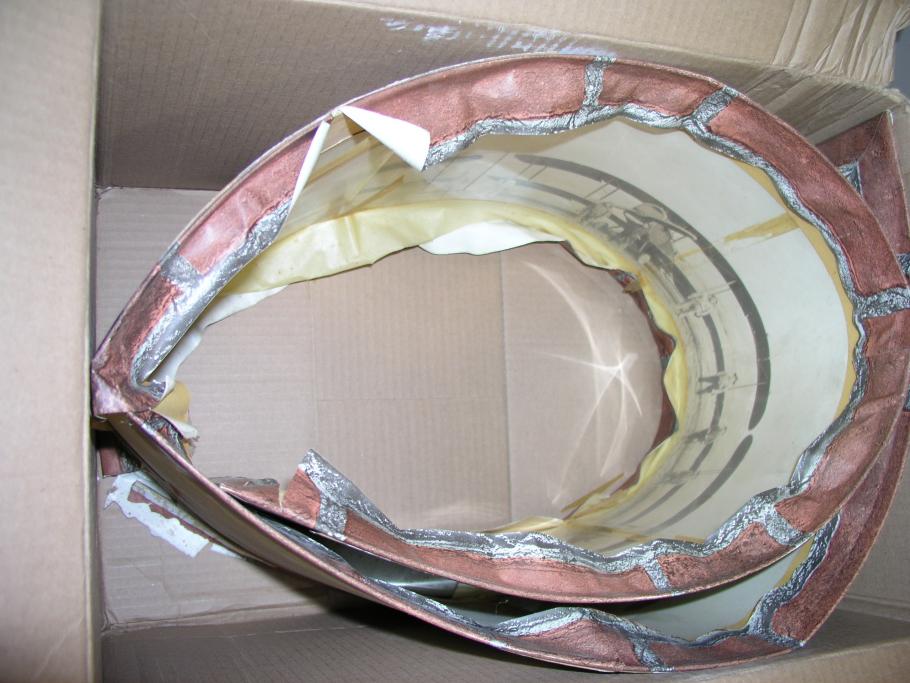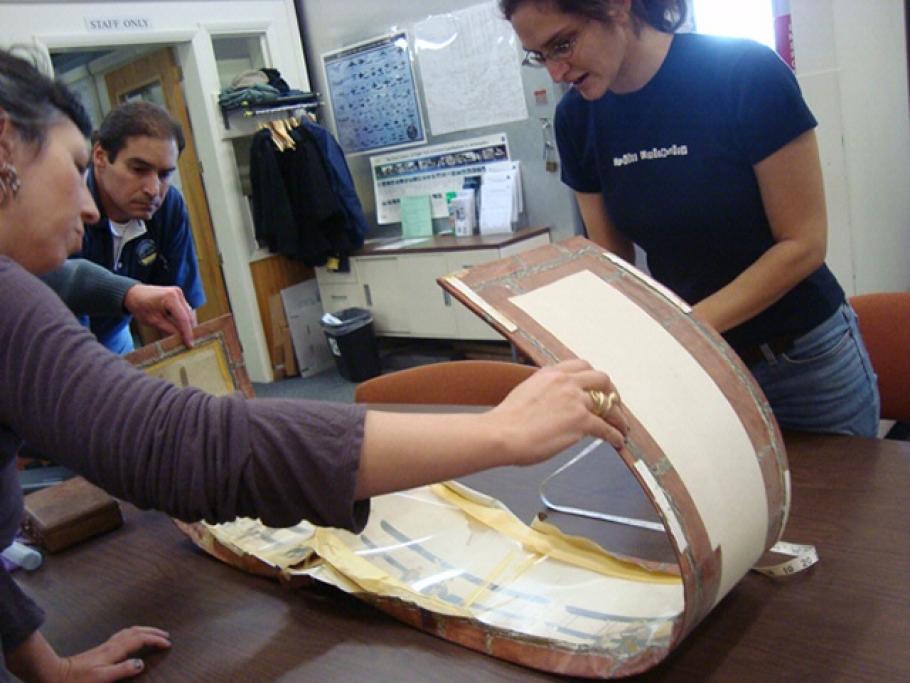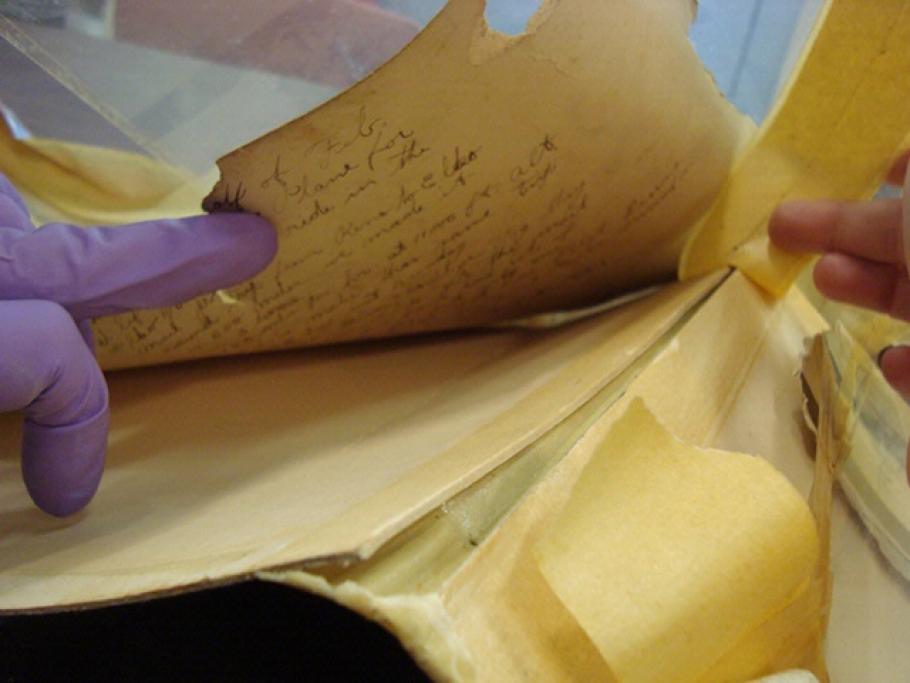The Archives Division at the National Air and Space Museum has lots of really neat items. Most things come to us in good condition and need very little preservation before being made available to the public. Occasionally however, we get an item that needs to be stabilized before it can be made accessible. That is where I come in. I am the preservation archivist and it is my job to identify objects that may be unstable or in need of conservation. So far I have identified 47 items in our collection that are in need of some level of preservation. I recently had the opportunity to preserve one of these items, a panoramic photograph of five De Havilland DH-4 mail planes that were modified by Bellanca. The black and white photo is 10 x 66 inches and depicts five planes which flew the Reno to Elko, Nevada mail route. Standing around the planes are their pilots and crews. At some time in the past a well meaning person “framed” the photograph by placing it on a backing board and covering with a flexible transparent plastic. The two sides were stuck together using a vinyl self-adhesive wallpaper. The photo came to us loosely rolled in a cardboard shipping box.
In order to preserve this photograph and make it available to the public, it needed to be removed from the frame and stored flat. The condition of the photograph was difficult to determine while in the frame. Nora Lockshin, the paper conservator from Smithsonian Archives, along with her two interns Shereen Choudhury and Rachel Midura, loaned us their time and expertise. The four of us worked as a team to remove the photograph from its frame and determine a safe storage concept. To learn more about the process of preserving this photograph please read Nora’s blog.
Once the photograph was removed from the frame we discovered some wonderful historical evidence. The names of some of the men in the picture are written in the lower margin. These names revealed that the same people are on both ends of the photograph. This happened quite often when taking early panoramic photographs using a 360˚ rotation camera. The camera and film rotate along the vertical axis, once the camera has past a location the people in that position run around behind the camera and stand at the opposite end of the photograph. Because the camera rotates slower then they run, they end up in the photograph twice. In this photograph this appears to be intentional, perhaps they did not have enough people to stand in front of all five planes? The final, and I think most thought-provoking, thing we uncovered was an inscription on the back of the photograph.
It reads, "The __(missing due to a tear in the photograph)___ half of Feb I left Reno by plane for Elko NV for a ride in the mail pit. Round trip from Reno to Elko is 600 miles. We made it in 5 hours 120 miles per hour at 1000 ft alt. Pilots make this same trip every day, but Sunday. Snow, Rain, Hail or Fog they are supposed to get the mail there. We have had lots of smash ups but only one pilot killed that was Pilot Lewis at Elko he was going to be married on his return trip. We have made a good record up to May 1st 1921" This heartrending inscription shows just what these men endured to get the mail through. It reminds us that, at one time, we were so reliant upon the mail system for information that men risked, and sometimes lost, their lives to make sure the information got through.



